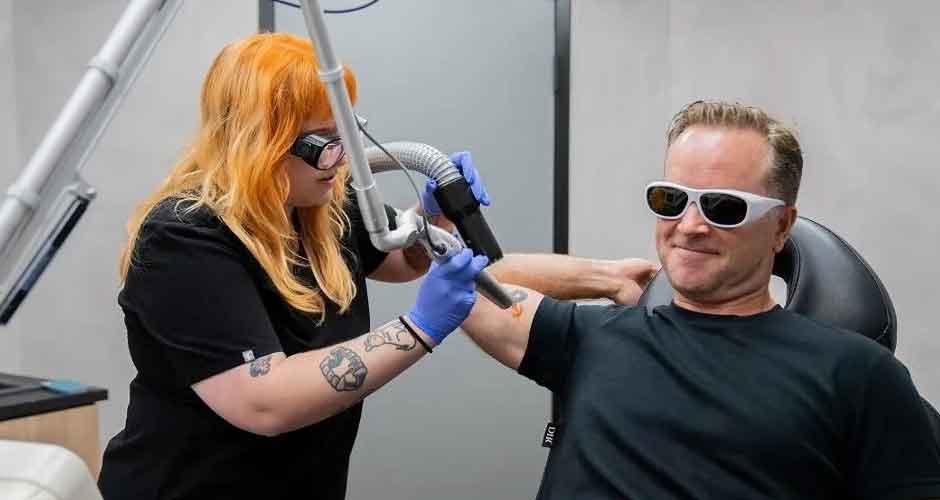Tattoos have become a ubiquitous form of self-expression, a way to wear your heart on your sleeve—quite literally. But what happens when that ink no longer represents who you are or where you want to go? The desire to erase past decisions and start anew has driven the tattoo removal industry to new heights. Gone are the days when tattoo removal was synonymous with pain and scarring. Today, the future of tattoo removal is marked by cutting-edge technologies and innovative techniques that promise a cleaner, more effective, and less painful process. Let’s dive into the emerging trends and innovations that are shaping this ever-evolving field.
The Evolution of Tattoo Removal
Tattoo removal has come a long way from its primitive roots. In the early days, options were limited and often harsh. Techniques like dermabrasion, which involved sanding the skin, and surgical excision, which literally cut the tattoo out, were painful and left significant scarring. These methods, while somewhat effective, were far from ideal.
The advent of laser technology in the late 20th century marked a turning point. Laser tattoo removal, particularly with Q-switched lasers, revolutionized the industry. This technology uses short bursts of high-intensity light to break down the ink particles in the skin, allowing the body to naturally eliminate them. While a significant improvement, even this method has its drawbacks, such as the need for multiple sessions and the discomfort associated with the process.
Despite these advancements, the quest for a perfect solution continues. Current technologies, though advanced, still leave room for improvement. The desire for quicker, less painful, and more effective methods drives ongoing research and development in the field of tattoo removal.
Emerging Trends in Tattoo Removal
The future of tattoo removal is brimming with promise, thanks to several emerging trends. Among these, pico-second lasers stand out. PicoSure, a brand known for its picosecond laser technology, offers a significant leap forward. These lasers operate at a trillionth of a second, delivering energy so rapidly that it shatters the ink into minuscule particles. This results in faster and more complete removal with fewer sessions and less discomfort compared to traditional Q-switched lasers.
Another intriguing trend is the development of tattoo removal creams. These topical solutions claim to fade tattoos over time by breaking down the ink through the skin’s natural processes. While still in their infancy and often met with skepticism, these creams offer a non-invasive alternative that could potentially complement laser treatments.
Natural and holistic approaches are also gaining traction. Methods such as salabrasion, which uses salt to exfoliate the skin, are being revisited with modern twists. While these techniques are less popular due to their unpredictability and potential for scarring, they represent a growing interest in more organic methods of tattoo removal.
Innovations in Tattoo Removal
The cutting edge of tattoo removal technology is marked by several exciting innovations. Nano-technology, for instance, is poised to revolutionize the industry. By utilizing nano-particles to target and break down tattoo ink more precisely, this technology promises to make removal faster, more efficient, and less painful. Current research is focused on perfecting these methods, and early results are promising.
Non-laser techniques are also emerging as potential game-changers. Magnetic tattoo removal, for example, uses magnetic fields to attract and remove ink particles from the skin. This method is still in the experimental stages, but it offers a fascinating glimpse into the future of non-invasive tattoo removal.
Cryotherapy, commonly used for wart and mole removal, is being adapted for tattoos. This method involves freezing the tattooed area to break down the ink particles, which are then removed by the body’s immune system. While still relatively new in the context of tattoo removal, cryotherapy could offer a viable alternative to laser treatments, particularly for individuals with darker skin tones who are more prone to laser-induced pigmentation issues.
Future Prospects and Predictions
The future of tattoo removal is bright, with several technological advancements on the horizon. Experts predict that as nano-technology and pico-second lasers become more refined, we will see a significant reduction in the number of sessions required for complete tattoo removal. This will not only make the process quicker but also more cost-effective for consumers.
The tattoo removal market is also set to grow exponentially. According to industry forecasts, the global market is expected to reach $4.8 billion by 2027, driven by factors such as the increasing popularity of tattoos and the growing acceptance of tattoo removal as a standard cosmetic procedure. This growth will likely spur further innovations and improvements in removal techniques.
Regulatory standards are also likely to evolve, ensuring that new technologies are safe and effective. As the industry grows, so too will the need for stringent regulations to protect consumers and maintain high standards of care. This will be particularly important as more experimental and cutting-edge methods enter the market.
The Impact on Consumers
The impact of these emerging trends and innovations on consumers is profound. One of the most significant benefits is the potential reduction in costs. As technologies become more efficient and less labor-intensive, the overall expense of tattoo removal is expected to decrease. This will make removal services more accessible to a broader audience.
Accessibility and convenience are also set to improve. With the advent of more effective and less painful methods, the hesitation many feel toward tattoo removal is likely to diminish. This will empower more individuals to make choices about their body art without the fear of enduring a long, painful, and expensive removal process.
Conclusion
In conclusion, the future of tattoo removal is an exciting landscape of innovation and improvement. From the advent of pico-second lasers to the promise of nano-technology, the industry is poised for significant advancements that will make tattoo removal faster, less painful, and more accessible. As the market grows and regulatory standards evolve, consumers can look forward to a future where removing a tattoo is as easy and commonplace as getting one.
For those considering laser tattoo removal Brisbane or exploring other emerging methods, staying informed about the latest trends and technologies is crucial. The landscape is rapidly changing, and what was once a daunting and painful process is now becoming more efficient and less intimidating. Whether you’re looking to erase a youthful mistake or simply make space for new art, the future of tattoo removal offers a myriad of options to meet your needs.
As we move forward, the focus will remain on refining these technologies and ensuring they are safe, effective, and accessible to all. The days of living with regret over a tattoo are numbered, thanks to the relentless pursuit of innovation in the field of tattoo removal. So, keep an eye on these emerging trends and innovations—they just might change your life, or at least your skin, forever.












